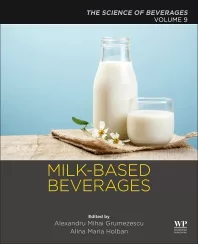Organic fresh juices and drinks see 33.5 percent growth in 2015
Organic industry addresses supply chain challenges
The U.S. organic industry posted new records in 2015 with total organic product sales hitting a new benchmark of $43.3 billion, up 11 percent from the previous year's record level and far outstripping the overall food market's growth rate of 3 percent, according to the Washington, D.C.-based Organic Trade Association's (OTA) 2016 Organic Industry Survey.
The industry posted its largest annual dollar gain in 2015, adding $4.2 billion in sales, up from the $3.9 billion in new sales recorded in 2014, according to the OTA. Of the $43.3 billion in total organic sales, $39.7 billion were organic food sales, up 11 percent from the previous year, and non-food organic products accounted for $3.6 billion, up 13 percent, it says. Nearly 5 percent of all food sold in the United States is organic, it adds.
Last year was a year of significant growth for the industry despite the continued struggle to meet consumer demand for organic. Supply chain issues persisted to dominate the industry, as organic production in the United States lagged behind consumption, the association says. In response, the organic industry came together in creative and proactive ways to address the supply chain challenge, to improve and develop infrastructure, and to advocate for policy to advance the sector, it adds.
"The industry joined in collaborative ways to invest in infrastructure and education, and individual companies invested in their own supply chains to ensure a dependable stream of organic products for the consumer. Despite all the challenges, the organic industry saw its largest dollar growth ever. Organic will continue to be the most meaningful farm-to-fork — and fiber — system," the OTA's Chief Executive Officer and Executive Director Laura Batcha said in a statement.
Produce the gateway to organic
Organic produce retained its longstanding spot as the largest of all the organic categories with sales of $14.4 billion, up 10.6 percent, the OTA says. Produce has always been and continues to be a gateway to organic. Almost 13 percent of the produce sold in this country now is organic, it adds.
The demand for fresh organic was most evident in the continued growth of fresh juices and drinks, which saw growth of 33.5 percent in 2015, making it the fastest-growing of all the organic sub-categories. The fastest-growing of the eight major organic categories was condiments, which crossed the $1 billion mark in sales for the first time in 2015,an 18.5 percent growth, the OTA says.
Dairy, the second biggest organic food category, accounted for $6 billion in sales, an increase of more than 10 percent. Dairy accounts for 15 percent of total organic food sales, it adds.
"Farm fresh foods — produce and dairy — are driving the market. Together, they account for more than half of total organic food sales," Batcha said. "The organic market looks like a healthy plate."
That said, Americans still like to snack, and more and more are snacking organically, the association reports. The organic snack food category garnered sales of $2.3 billion, up almost 14 percent from 2014. This is more than triple the level of this sector 10 years ago, it adds.
More accessible, but challenges persist in supply chain
Increased consumer demand for organic products in 2015 also could be attributed to greater access to these products from mainstream retailers. As supermarkets, big box stores, membership warehouse clubs and other outlets continued to up their organic offerings, organic options have become more available than ever before.
The growth in the organic market, however, did not come without continued challenges to the supply chain. Dairy and grains could have been even more robust in 2015 if greater supply had been available, the OTA notes. There is an industry-wide understanding of the need to build a secure supply chain that can support demand, the association says. This goes hand-in-hand with securing more organic acreage, developing programs to help farmers transition to organic, and encouraging new farmers to organically farm, it adds.
While some companies are individually dealing with supply chains issues, others are working collaboratively to address the concern. For example, the U.S. Organic Grain Collaborative, whose members include Annie's, Stonyfield, Organic Valley, Clif Bar, Nature's Path and Grain Millers, among others are working in partnership. On the fiber side, 2015 saw the creation of OTA's Organic Fiber Council, which includes members from across the organic fiber industry and whose focus is to increase the awareness of the benefits of organic fibers and to encourage more organic cotton acreage in the United States, it says.
Despite strategic challenges, OTA's Batcha is confident about the industry's future prospects. "Organic is a bright spot in agriculture and the economy of America,” she says. “Our success will continue to be built on a solid foundation of stakeholder engagement, transparency and meaningful organic standards that consumers trust in."
OTA's 2016 Organic Industry Survey was conducted and produced on behalf of OTA by Nutrition Business Journal. The survey was conducted from Jan. 7 through March 25, 2016. More than 200 companies responded to the survey.
Looking for a reprint of this article?
From high-res PDFs to custom plaques, order your copy today!







